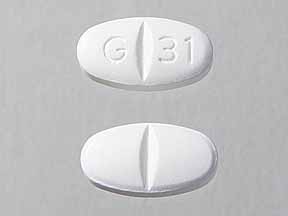Neurontin is the trade name for the generic drug gabapentin. It is useful as an anti-epileptic drug and as an analgesic, particularly for pain of the neuropathic or neurogenic type. (pain from irritation or inflammation of nerves). When used for controlling epilepsy, it is usually used in conjunction with another anti-epileptic drug. It is used much more extensively in the medical field to treat pain than it is to treat epilepsy.

NEURONTIN is a prescription medicine used to treat:
- Pain from damaged nerves (postherpetic pain) that follows healing ofshingles (a painful rash that comes after a herpes zoster infection) in adults.
- Partial seizures when taken together with other medicines in adults and children 3 years of age and older with seizures.
The chemical structure of gabapentin is related that of gamma-aminobutyric acid (GABA) which is a neurotransmitter in the brain. The exact mechanism as to how gabapentin controls epilepsy and relieves pain is unknown, but it probably acts like the neurotransmitter GABA.
Animal studies show that gabapentin prevents the development of allodynia (a normally non painful stimulus which is perceived as painful) and hyperalgesia (an exaggerated response to a painful stimulus).
Gabapentin can be very helpful in controlling the pain of trigeminal neuralgia (tic doloreaux), post herpetic neuralgia (the lingering pain after a bout of shingles), the pain of diabetic neuropathy and other neuritic pains such as pain from nerve irritation due spinal arthritis or disc disease and occipital neuralgia. Occasionally it seems to be helpful in controlling migraine and other headaches. It has also been reported to be helpful in controlling the pain of fibromyalgia.
Gabapentin is generally well tolerated. The main side effects are dizziness and drowsiness. Occasionally there maybe some fluid retention, unsteadiness or G.I upset, mainly diarrhea.
Gabapentin is also sometimes used to relieve the pain of diabetic neuropathy (numbness or tingling due to nerve damage in people who have diabetes), and to treat and prevent hot flashes (sudden strong feelings of heat and sweating) in women who are being treated for breast cancer or who have experienced menopause (”change of life”, the end of monthly menstrual periods).
The effective dose of gabapentin varies greatly. Some persons need only 200-300 mg a day whereas others may need 3000 mg or more a day. It may take several weeks to become effective, so it is important to stay on it for an adequate length of time.
Neurontin is used much more extensively in the medical field to treat pain than it is to treat epilepsy
While Neurontin (generic name: gabapentin) was initially developed as an antiepileptic medication, it is now widely used in the medical field to treat various types of pain, particularly neuropathic pain.
Neuropathic pain is caused by damage or dysfunction of the nervous system and can manifest as shooting or burning sensations, tingling, or numbness. Conditions such as diabetic neuropathy, postherpetic neuralgia (shingles pain), and peripheral neuropathy are examples of conditions where gabapentin is frequently prescribed to alleviate pain.
The mechanism of action of gabapentin in pain management is not fully understood, but it is believed to modulate the activity of certain neurotransmitters involved in pain signaling in the brain and nervous system.
Due to its effectiveness in treating neuropathic pain and its relatively low risk of addiction compared to opioids, gabapentin has become a popular choice for healthcare providers in managing chronic pain conditions. It is often considered a first-line treatment option for neuropathic pain and is prescribed off-label for various other types of chronic pain.
However, it’s worth noting that while gabapentin can be effective for many people, it may not work for everyone, and like any medication, it can have side effects. It’s essential for individuals to work closely with their healthcare providers to determine the most appropriate treatment plan for their specific pain condition.
